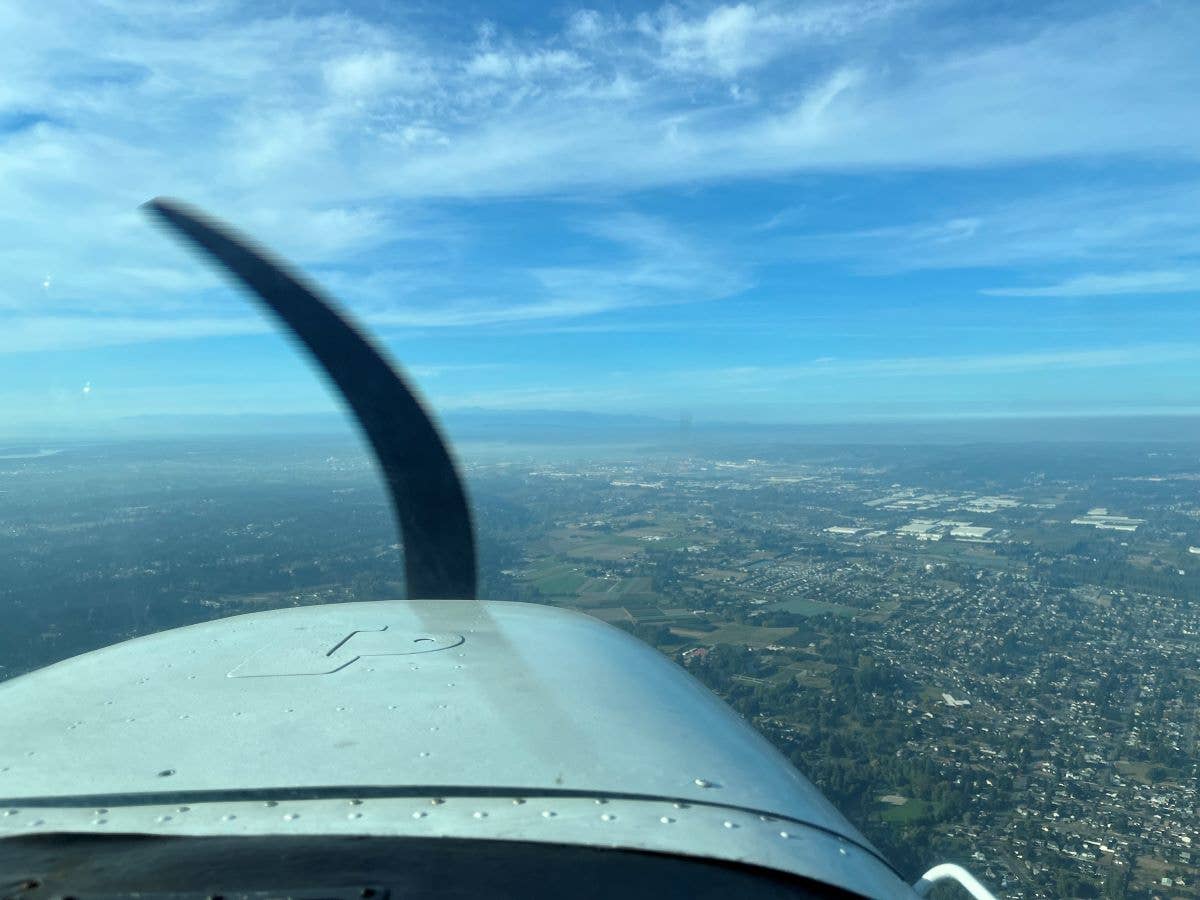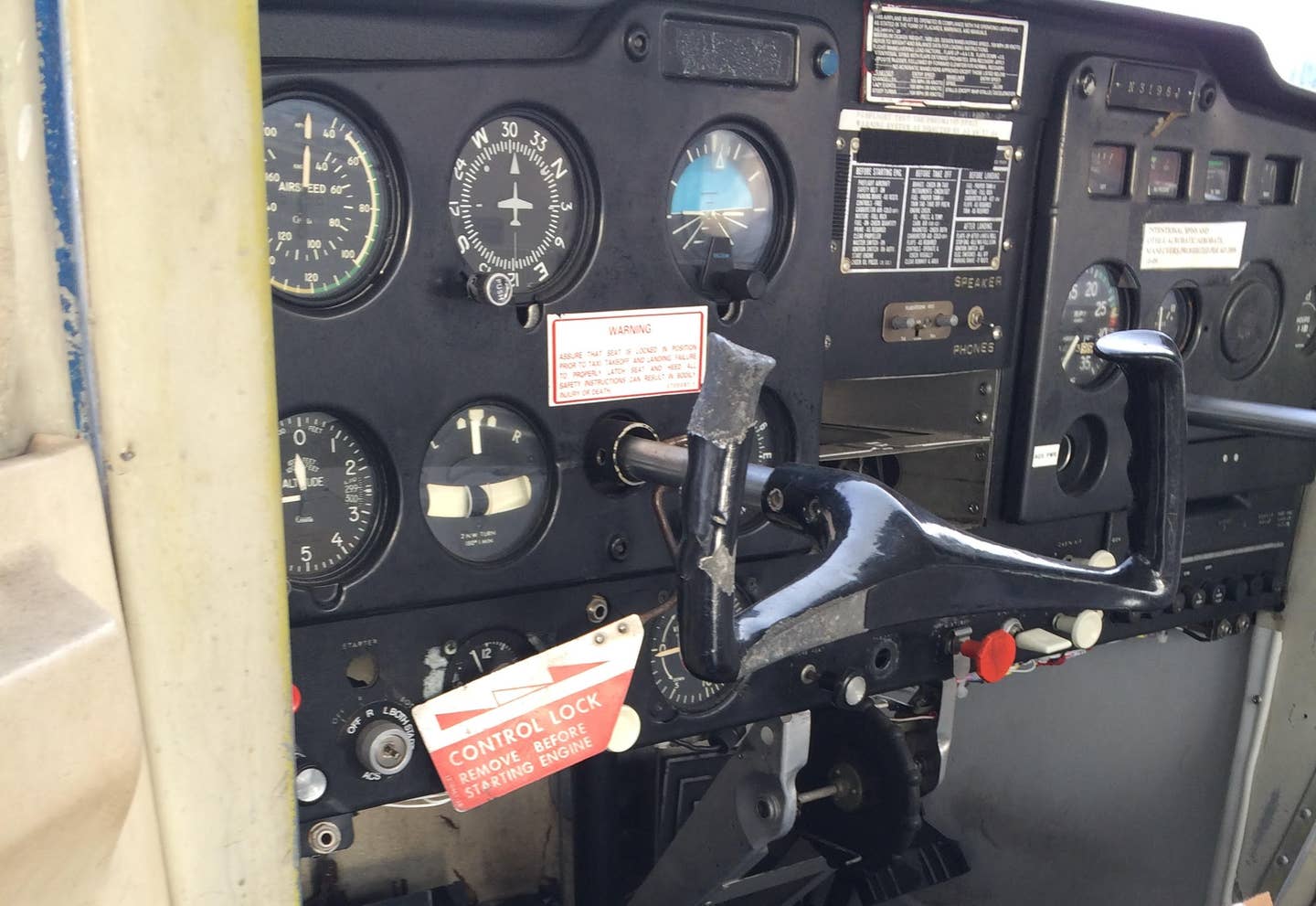Always Look for a Place to Land
Here’s how to identify emergency landing areas before you need them.

One of the first things pilots learn is to always look for emergency landing areas. [Courtesy: Meg Godlewski]
"Where would you land if the engine quit right now?"
This is a question every pilot needs to ask themself, and frequently. That's not because the aircraft engine is unreliable—and I have to stress this because there have been learners who panic when a CFI asks this—but because aircraft, unlike cars, don't have the luxury of simply pulling over when there is an uncommanded loss of engine power.
I teach my learners to always be looking for emergency landing areas just like you would scope out restrooms in public places when you have small children. Before a possible emergency, you want to know where they are before you need them.
FAA & Emergency Landings
The FAA doesn't tell us where to land in an emergency. The closest we get to a regulation on this is FAR 91.13, which states no person may operate an aircraft in a careless or reckless manner so as to endanger the life or property of another, and FAR 91.119, Minimum safe altitudes which states, "except when necessary for takeoff or landing, no person may operate an aircraft below the following altitudes anywhere, allowing if a power unit fails, an emergency landing without undue hazard to persons or property on the surface. Over congested areas of a city, town, or settlements or over any open air assembly of persons, an altitude of 1,000 feet above the highest obstacle within a horizontal radius of 2,000 feet of aircraft, over other than congested areas an altitude of 500 feet above the surface, except over open water or sparsely populated areas, in those cases the aircraft may not be operated close than 500 feet to any person, vessel, vehicle, or structure."
If you lose engine power during the flight, breaking a FAR is likely the least of your worries. Besides, the FAA allows pilots to deviate from the FARs to meet the nature of the emergency.
Space Needed
When you begin your flying career, ask your instructor to point out the potential emergency landing spots as you fly to and from the practice area, as well as the places within it. This is important, because at first you don't have a frame of reference of how much space an airplane needs to come to a stop and what constitutes a good emergency landing field.
I utilize three practice areas. The learner’s first lesson includes overflying them, and before every maneuver, we identify one we will use if the engine quits.
This activity provides an introduction to learning to read the VFR sectional, as the learners are taught to look for all runways, paved and other than hard surfaced. The ones designated with a magenta circle with an "R" in the center can be confusing at first. Contrary to many a learner's first guess, this is not the symbol for a "restricted" runway, it's a privately owned one. I tell my learners to recall it with the phrase "rich dude (that's the “R”) has a private runway".
Agricultural fields are often the second-best choice if you don't have an actual runway within gliding distance, depending on the crop. Avoid anything with vines, such as beans and tomatoes, and pumpkin patches as those are basically growing boulders.
Also, be aware that agricultural fields are often surrounded by irrigation ditches, and some of them are several feet deep and indiscernible until you're too low to avoid them. Wire fences around the crops can also be invisible until you're almost on top of them.
Dry lake beds can be an option if in an arid part of the country, provided there are no chuckholes or large rocks.
Empty parking lots are also an option. By empty I mean the ones without cars and without light stands. You often find them off the extended centerlines of runways or next to the runway because the light stands may interfere with the glideslope of the ILS.
Learn Your Area's Topography
In the Pacific Northwest we have clear-cuts that look empty from altitude, but when you get down to ground level, you see the tree stumps are several feet high. During a training flight an instructor pointed out the logging access road that ran parallel to the clear-cut and suggested that, if we had to, we would put down on the road aiming for the straightaway. There were trees on either side of the road, we noted, which looked to be at least 20- 30 feet high. Our wingspan was approximately 38 feet. If the road was 40 feet wide, we'd barely make it. Or else the trees would act as arresting cables and jerk us to a halt. We never had to test this, but when I fly over mountains to this day I look for those open areas and roads next to them.
When flying to eastern Washington, I follow the route over the freeway that has the unpaved runways adjacent to it. These runways were built in the 1930s by the Works Progress Administration to be used as emergency landing strips for the DC-3s that crossed the mountains.
- READ MORE: Flying with an Athletic Mindset
Landing on the beach is also an option if you are over the Puget Sound and within gliding distance to shore. Most of the beaches are made of gravel, but if you do encounter sand, aim for the dark (wet) sand as it is more firm than the dry and will likely put the aircraft on its back. Stay away from the heavily populated beaches, or do your best to put it down in shallow water offshore away from people. You may flip the aircraft, but it's better than taking out a civilian.
Athletic Fields
If you're a pilot and you spend a lot of time on municipal athletic fields used by high school and college teams, you may find yourself scoping them out as potential emergency landing sites. I know I have. I often wonder if someone had to, could they put a small aircraft, such as a Cessna 172 or Piper Cherokee, down on the pitch?
There are a few parks where my field hockey team plays that are below the VFR arrival and departures path for King County International Airport-Boeing Field (KBFI) and Renton Municipal Airport (KRNT). The aircraft are supposed to be at 1,200 feet in order to stay away from the big iron in the Class B airspace above them. I have flown these routes many, many times. A few times, during play, my teammates have called my attention to the aircraft, asking if they are in trouble or buzzing us? I assure them neither is the case.
Every now and then we learn about aircraft that make emergency landings on golf courses. Making a safe landing on a golf course without engine power takes a great deal of skill and, frankly, luck as such terrain is often sloped or wildly uneven. Most pilots file these emergency landing areas under "better than hitting a house or building."
Stay Off The Road
One of the first things pilots learn is that roads are not the place to put it down because of power and telephone lines that you often can't see until it is too late—not to mention street signs, parked cars, and moving traffic. These are areas of last resort. Sometimes the pilot gets the airplane down just fine, then a car pulls in front of them because the driver doesn't understand the airplane is having an emergency, or they simply don't see it.
Invariably, when this topic is discussed in ground school, someone will mention the legends surrounding the Autobahn in Germany, designed with 1-mile straightways every 5 so they could be used as runways. This allegedly stems from Dwight Eisenhower, who while serving as supreme commander of the Allied Expeditionary Force in Europe during World War II, was impressed by the highway system in Germany. When he became U.S. president, he wanted to do something similar with America's road network, which resulted in the formation of the Interstate Highway System in 1956.
I admit when I am driving on a flat, four-lane road someplace, I do think about its use as an emergency landing strip.

Subscribe to Our Newsletter
Get the latest FLYING stories delivered directly to your inbox






